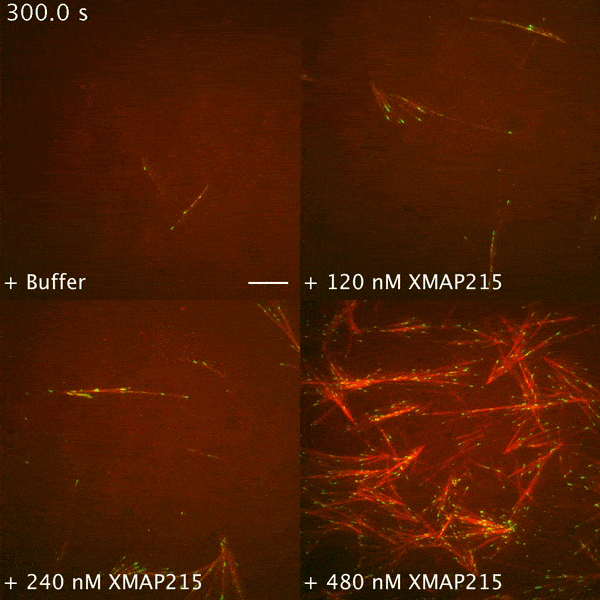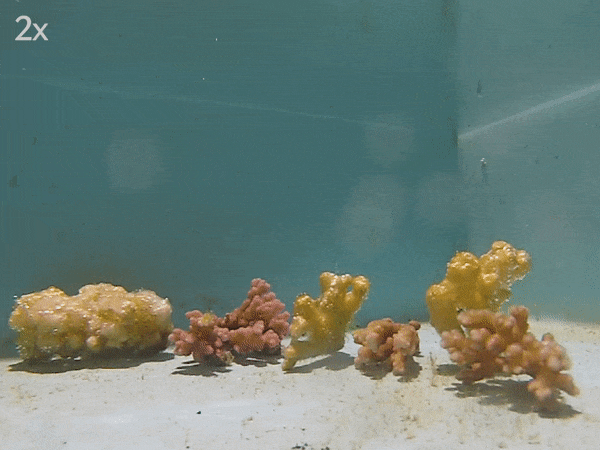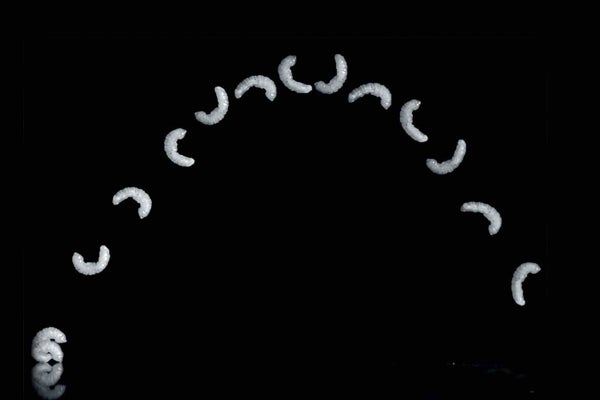You probably know the GIF as the perfect vehicle for sharing memes and reactions. We believe the format can go further, that it has real power to capture science and explain research in short, digestible loops.
So each Friday, we’ll round up the week’s most GIF-able science. Enjoy and loop on.
Holy Jumping Maggots!
On supporting science journalism
If you're enjoying this article, consider supporting our award-winning journalism by subscribing. By purchasing a subscription you are helping to ensure the future of impactful stories about the discoveries and ideas shaping our world today.
.gif)
Imagine that you could easily jump over a Boeing 747 airliner. Now imagine doing that with no legs or arms. That is basically the scale of what a gall midge larvae achieve, only they do not jump over planes—they jump between plants. The little critters create pockets of abnormal growth—called galls—on goldenrod plants, living and feeding on them from the inside. But if chance is not in their favor and a gall breaks open, it seems evolution has chosen a leap of faith over a crawl to safety.
But where does a legless, barrel-shaped larva get its hops? The three-millimeter-long maggot bends at its middle, latches its upper body to its rear end and dilates its lower half to increase the tension on that latch. Finally, the larva’s bent-sausage body snaps straight, catapulting it in what researchers call “a ballistic trajectory.”
Also, it apparently took three full years for scientists to perfect the imaging technique to capture the airborne maggots.
Without These, You Would Be Goop

You are propped up by your cells; they form your bones and your muscle. They are fighting gravity for you, keeping you from falling into some kind of goo. But how do our individual cells keep themselves from the same mushy fate? They get their structure from microtubules, hollow scaffolds that line cell walls. What has never been completely understood, however, is exactly how microtubules form. Now researchers at Princeton University say they have figured that out.
In a paper published in May, the scientists show how different proteins coordinate in a cell to seed the growth of each microtubule. The researchers also developed an imaging technique to isolate—and actually see—a thin slice of microtubule growth amid the visual clutter of background molecules. You probably seldom think about your cells, but you will never think of them in the same way after seeing this GIF.
Dead Coral Rising

As ocean temperatures rise, coral reefs suffer. This week Australian researchers found that sustained heat waves—such as one that devastated the Great Barrier Reef in 2016—not only bleach corals but sometimes kill them, endangering whole reef ecosystems.
When the researchers exposed corals in a lab to conditions like those of the 2016 heat wave, the corals died and rapidly decayed. Layers of microbes quickly grew on their skeletons and broke them down, making the remains porous and filled with air bubbles. That process is why the dead coral floats to the top of the tank in the GIF above. This image shows that rising temperatures pose a risk not only to the corals but to the structure of the reef itself. The implications for the ecosystem—and the half-billion people whose livelihoods depend on coral reefs—are alarming.
Evolution: Caught in the Act
.gif)
This GIF shows why the flower Lapeirousia anceps and the long-tongued fly make a perfect match: the fly’s absurdly long tongue is just the right tool for harvesting nectar from the plant’s narrow-necked blossom. But the South African flower is changing. It now exists in two forms: one with a longer tube (left) and one with a shorter tube (right). The long-tongued fly pollinates them both, which should mix the genes of the two forms. So how and why are the flowers diverging?
South African researchers have solved this biological conundrum with a surprising tool: nanoparticles called quantum dots. They fluoresce, or glow, with different colors, depending on their size. By tagging pollen from the two flower types with differently colored dots, the scientists learned that each type deposits pollen on a different part of the fly: one on the middle of its tongue and one on its head. This arrangement keeps the pollen of the two flowers from mixing, genetically isolating them. As time goes by, these flowers will likely become even more distinct, eventually creating the next sprig in the evolutionary tree.
A Fabricated Window to the Soul
.gif)
Although dry eye disease affects many people, very few treatments exist. The complexity of the human eye makes it a difficult organ to study, so researchers at the University of Pennsylvania have developed a new “eye on a chip” model to study diseases like dry eye.
The eye model, shown in the GIF above, uses cells from a human cornea (dyed yellow) and conjunctiva (dyed red), two of the eye’s outermost layers. These cells are wetted by false tear ducts (dark blue). The model even “blinks”: a thin slab of gelatin (light blue) flicks over the eye cells at roughly the same pace a human eye would. The artificial organ has limitations because it lacks blood vessels, nerves and an immune system, but it serves as a promising way to study treatments for conditions such as dry eye.
Nothing but Net
.gif)
Humans have left their mark on every ecosystem on earth. And in the case of underwater mountains called seamounts, that mark is literal. Starting in the 1960s, seamounts north of the Hawaiian Islands were heavily fished and scarred with trawl nets. But in 1977 the creation of the U.S.’s exclusive economic zone around Hawaii protected some of the sites, allowing them to recover for more than 40 years.
New research shows scenes like the one pictured above. The corals are growing again, even on the surfaces of lost trawling nets. And the larger marine animals have returned. That development is encouraging, especially because many of the deep-sea corals that live on these seamounts grow only a few microns to millimeters a year.
Want more science GIFs? Here you go.
